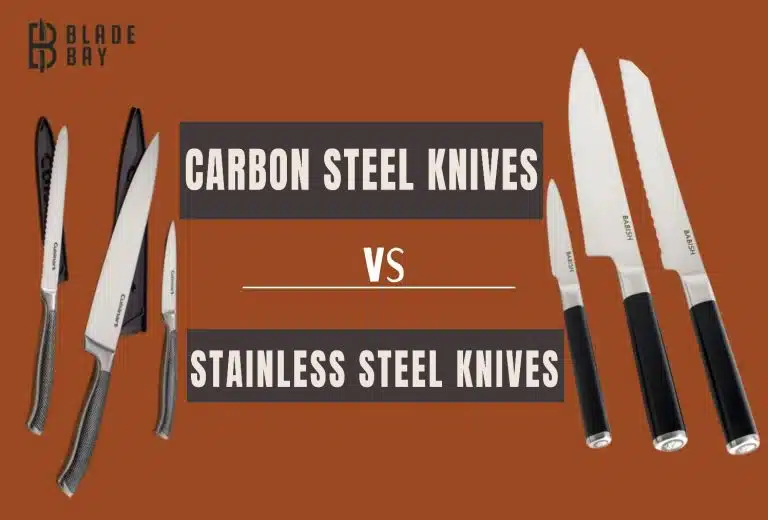Bunka vs Santoku | Learn the Difference Choose the Best
Table of Contents
ToggleBunka vs Santoku | Learn the Difference Choose the Best
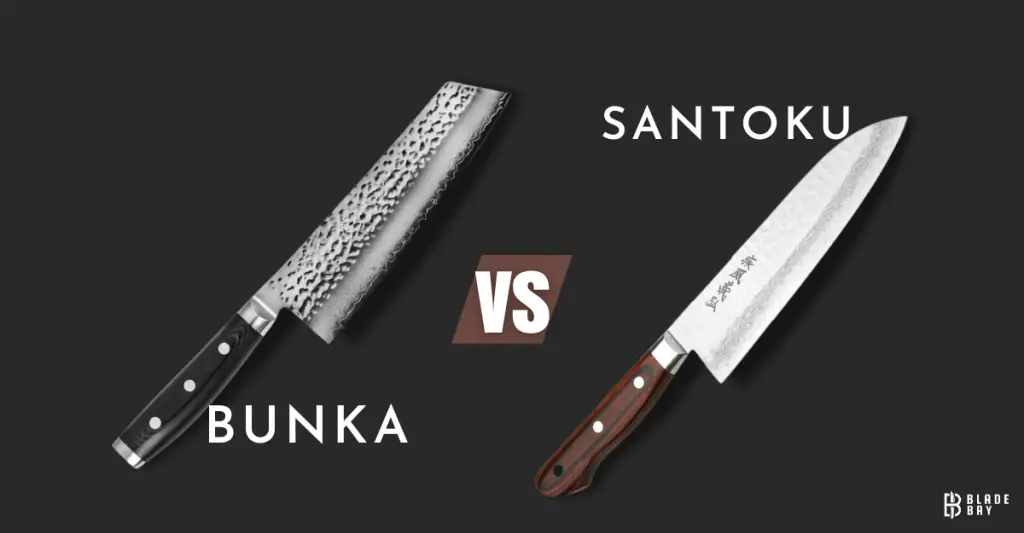
When it comes to Japanese kitchen knives, there are two popular types that often get compared: Bunka and Santoku.
While both knives have their own unique features and functions, many people find it difficult to choose between the two.
In this article, we will dive deep into the differences between Bunka vs Santoku and help you decide which one is the right fit for your kitchen.
The Santoku knife is perhaps the most well-known and widely used Japanese knife in the world. Its name literally translates to “three virtues,” which refers to its ability to chop, slice, and dice with ease.
The blade of a Santoku knife is typically shorter and wider than a traditional chef’s knife, with a flat edge and a curved tip. It is a versatile knife that can handle a wide variety of tasks, from slicing vegetables and fruits to cutting meat and fish.
On the other hand, the Bunka knife is a lesser-known Japanese knife that has gained popularity in recent years. It is similar to a Santoku knife in terms of its shape and size, but it has a more pointed tip and a deeper blade.
The Bunka knife is ideal for tasks that require precision and control, such as mincing herbs or filleting fish.
So, which one is better?
The answer really depends on your personal preferences and cooking style. While the Santoku knife is great for general-purpose use, the Bunka knife is better suited for more specialized tasks.
In the following sections, we will explore the differences between Bunka vs Santoku in more detail and help you make an informed decision.
Bunka knives are a type of Japanese kitchen knife that has been gaining popularity among professional chefs and home cooks alike. With a unique shape and a versatile design, Bunka knives have become a favorite among those who appreciate precision cutting and the art of cooking.
But what exactly are Bunka knives?
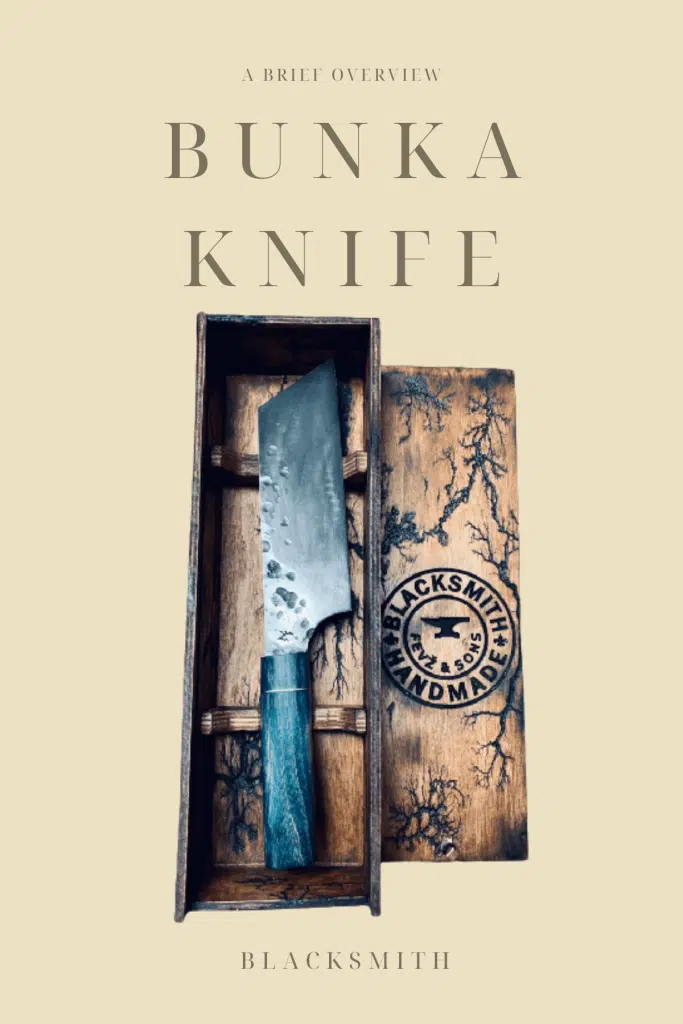
The Design of Bunka Knives
One of the most distinctive features of Bunka knives is their unique design. While they share some similarities with other Japanese knives, such as the Gyuto and Santoku, Bunka knives have a more pointed tip and a taller blade height.
The pointed tip of the Bunka knife makes it an excellent tool for precise cutting, such as when preparing vegetables or slicing meat. The taller blade height also makes it easier to cut through thicker ingredients, such as root vegetables or meat.
Bunka knives typically have a blade length of around 6-8 inches, which makes them suitable for a wide range of tasks in the kitchen. They are also lightweight and well-balanced, which makes them comfortable to use for extended periods.
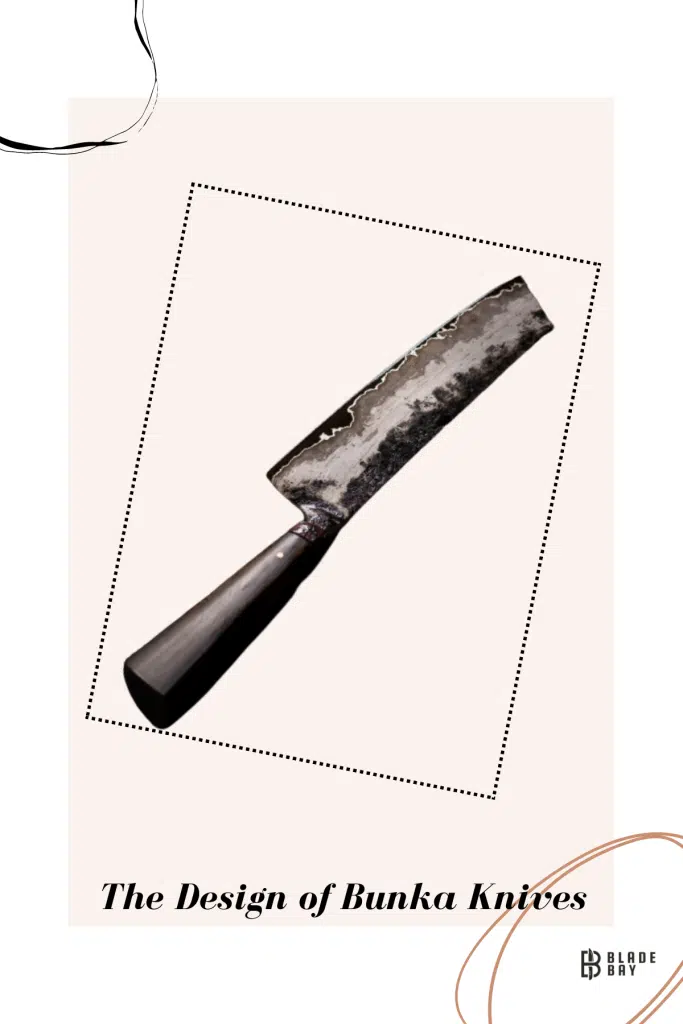
The blade of a Bunka knife is usually made from high-quality stainless steel or carbon steel. The blade is sharpened to a very fine edge, which allows for precise cutting and slicing.
The handle of a Bunka knife is usually made from wood, such as rosewood or ebony, and is designed to provide a comfortable grip. The handle is also designed to be durable and long-lasting, ensuring that your Bunka knife will be a valuable addition to your kitchen for years to come.
Again, Bunka and EDC knives are both types of Japanese-style knives. The main difference between them is their intended use and design. Bunka knives are typically used for precision cutting, chopping, and slicing vegetables and meats, while EDC knives are designed for everyday carry and general utility tasks such as opening packages, cutting rope, and breaking down cardboard boxes. Both types of knives are often made with high-quality steel and feature sharp, durable blades.
Uses of Bunka Knives
Bunka knives are incredibly versatile, and can be used for a wide range of kitchen tasks. Some of the most common uses for Bunka knives include:
- Slicing and chopping vegetables
- Preparing meat, including trimming and deboning
- Slicing fish
- Minced herbs and garlic
- Cutting fruit
Bunka knives are also an excellent tool for precision work, such as making decorative cuts or creating intricate designs in food.
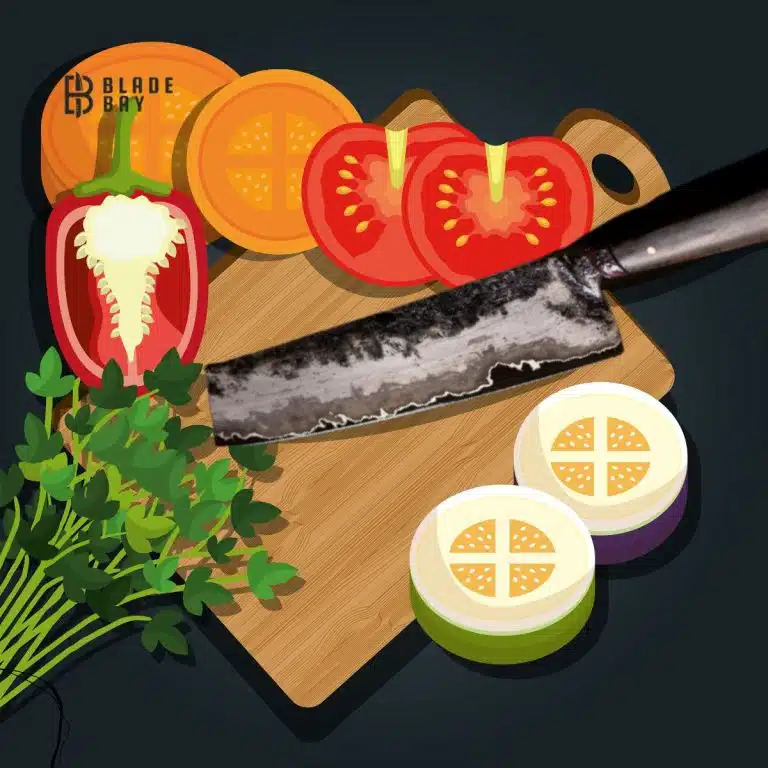
Bunka knives are a fascinating and versatile kitchen tool that every chef and home cook should consider adding to their collection. With their unique design, precision cutting capabilities, and versatility, Bunka knives are an excellent choice for anyone looking to take their cooking skills to the next level.
So, whether you are a professional chef or a home cook, we hope that this article has provided you with a comprehensive overview of Bunka knives and their many uses. With the right Bunka knife in your hand, you will be able to take your cooking to new heights and create culinary masterpieces that are sure to impress your friends and family.
What are Santoku Knives? A Brief Overview.
Santoku knives are a type of Japanese kitchen knife that has become increasingly popular in recent years. With a unique shape and a versatile design, Santoku knives have become a favorite among professional chefs and home cooks alike
But what exactly are Santoku knives, and how do they differ from other types of kitchen knives? In this article, we will provide a comprehensive overview of Santoku knives, including their history, design, uses, and more.
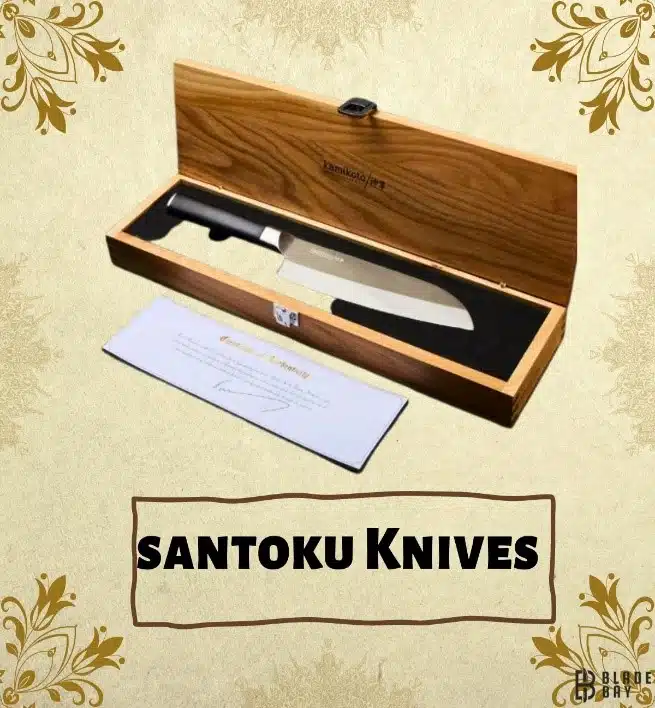
From their origins in Japan to their popularity in Western kitchens, we will explore every aspect of this fascinating kitchen tool. Whether you are a professional chef looking to add to your collection of knives, or a home cook interested in exploring new culinary horizons, this article is for you.
So, grab a cup of tea and join us as we take a deep dive into the world of Santoku knives. By the end of this article, you will have a thorough understanding of what makes these knives unique and why they are a valuable addition to any kitchen.
The Design of Santoku Knives
Santoku knives have a unique design that sets them apart from other types of kitchen knives. They typically have a shorter, wider blade than other Japanese knives, such as the Gyuto or Bunka knife.
The blade of a Santoku knife is usually around 5-8 inches long, which makes it suitable for a wide range of tasks in the kitchen. The blade is also wider than other Japanese knives, which makes it easier to use for tasks such as chopping and slicing.
The shape of the Santoku knife blade is also distinctive. Unlike other knives, which typically have a pointed tip, Santoku knives have a flat edge that curves gently upwards towards the tip. This shape makes the knife ideal for slicing, dicing, and chopping, as well as for performing precise cuts such as julienning vegetables.
The blade of a Santoku knife is usually made from high-quality stainless steel or carbon steel. The blade is sharpened to a very fine edge, which allows for precise cutting and slicing.
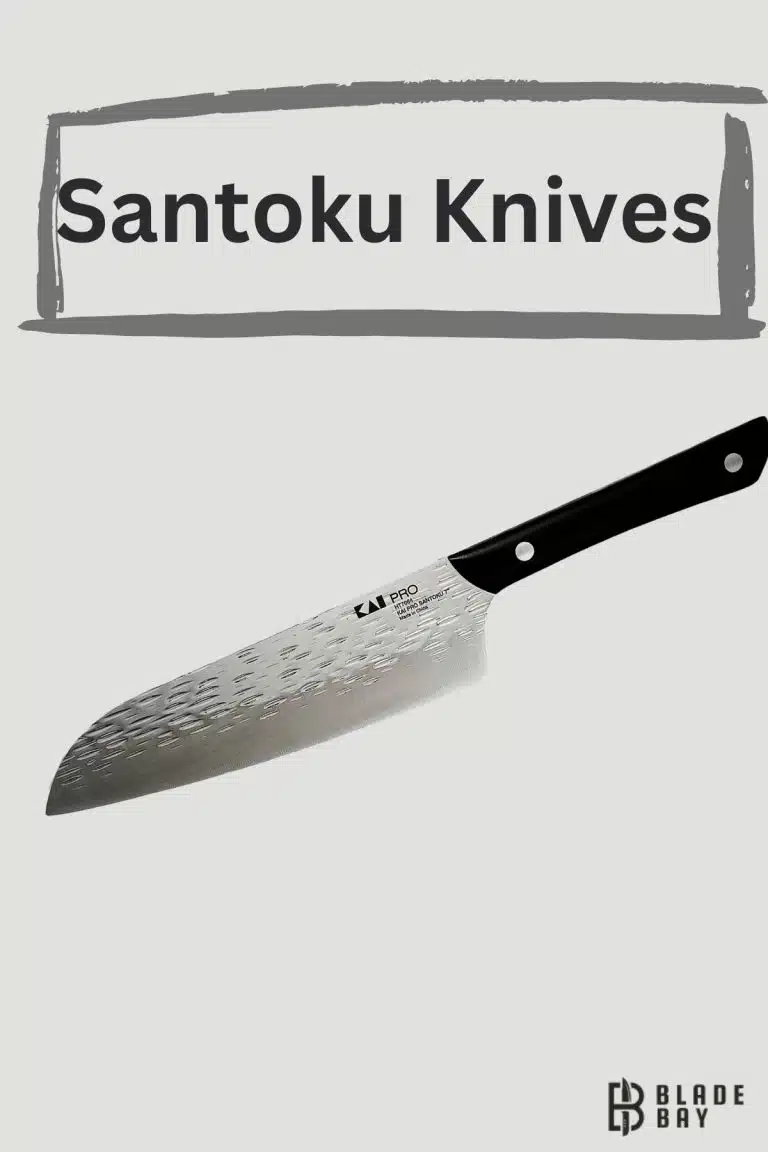
The handle of a Santoku knife is usually made from wood or synthetic materials, and is designed to provide a comfortable grip. The handle is also designed to be durable and long-lasting, ensuring that your Santoku knife will be a valuable addition to your kitchen for years to come.
Uses of Santoku Knives
Santoku knives are a type of kitchen knife that originated in Japan. They are typically shorter and wider than Western-style chef’s knives, and have a flat edge with a rounded tip. Santoku knives are a versatile tool in the kitchen, and can be used for a variety of tasks. Here are some common uses of Santoku knives:
1. Slicing: Santoku knives are great for slicing fruits, vegetables, and meats. The flat blade allows for smooth, clean cuts, while the wide blade makes it easy to transfer food from the cutting board to a pan or plate.
2. Chopping: The broad blade of a Santoku knife is perfect for chopping herbs, garlic, onions, and other small vegetables. The flat edge of the blade ensures that the food is cut evenly and uniformly.
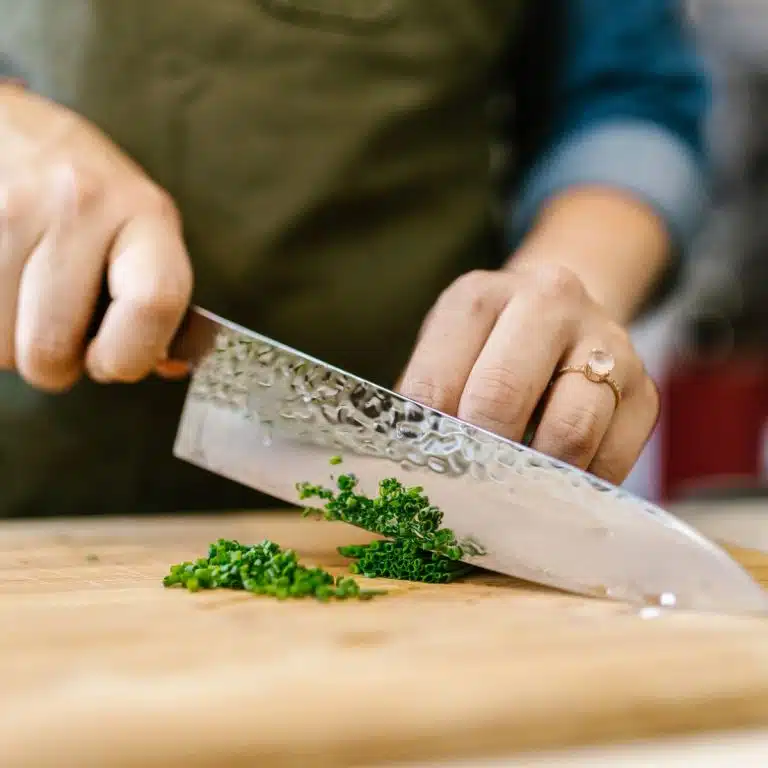
3. Dicing: Santoku knives are excellent for dicing vegetables and fruits. The wide blade allows for more control and precision, while the sharp edge ensures clean, even cuts.
4. Mincing: The flat blade of a Santoku knife makes it ideal for mincing herbs and garlic. The wide blade also allows you to rock the knife back and forth, making it easy to chop small pieces quickly and efficiently.
5. Carving: While not as long as a traditional carving knife, a Santoku knife can be used to carve small roasts, poultry, and other meats. The sharp blade makes it easy to make thin, even slices.
General-purpose knife: With its versatility and ease of use, a Santoku knife can be used for most kitchen tasks, from slicing bread to cutting cheese to peeling vegetables.
Overall, the Santoku knife is a great all-purpose knife that can handle most kitchen tasks with ease. Whether you’re a professional chef or a home cook, a good quality Santoku knife is a valuable addition to any kitchen.
Bunka vs. Santoku – A Detailed Comparison
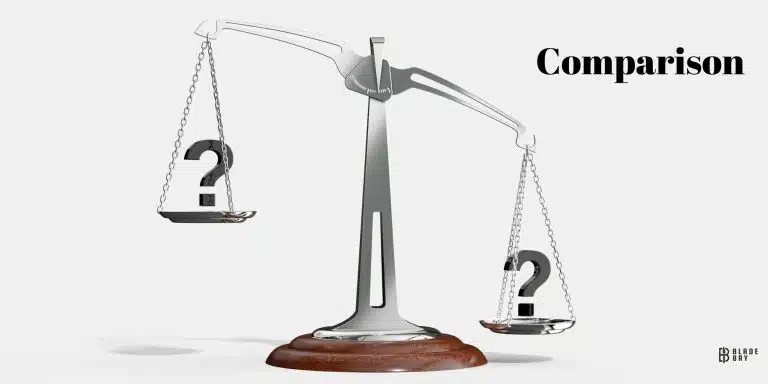
When it comes to Japanese knives, the Bunka and Santoku knives are two popular options that are often compared. Both knives are versatile and designed to handle a variety of kitchen tasks, but they have distinct differences that set them apart.
In this article, we will take a closer look at the Bunka vs Santoku knives and explore their differences in construction, blade material, sharpness, knife handle, and best suits for. By the end of this comparison, you will have a better understanding of which knife is better suited for your cooking needs.
Whether you are a professional chef or a home cook, investing in a high-quality Japanese knife can make a significant difference in your cooking experience. So, let’s dive into the Bunka vs Santoku comparison and find out which knife comes out on top.
Factors | Bunka | Santoku |
Knife Construction (Shape, Design, Size, and Weight) | Bunka knives have a pointed tip with a flat profile, a shorter blade length (around 5-7 inches), and a slightly heavier weight compared to Santoku knives. They also have a curved blade that is flatter near the tip, making them great for precise cutting tasks. | Santoku knives have a straighter edge, a wider blade (around 6-7 inches), and a lighter weight compared to Bunka knives. They have a curved profile along the blade, making them well-suited for chopping and slicing tasks. |
Blade Material | Bunka knives are typically made from high-carbon steel or stainless steel. Some Bunka knives may have a Damascus steel pattern on the blade for added aesthetic appeal. | Santoku knives are commonly made from high-carbon steel, stainless steel, or VG-10 steel, which is known for its durability and resistance to rust and stains. Some Santoku knives may have a hammered or Damascus finish on the blade for added style. |
Sharpness | Bunka knives are known for their sharpness, which makes them great for precise cuts and intricate work | Santoku knives are also known for their sharpness, which makes them ideal for slicing, dicing, and chopping. |
Knife Handle | Bunka knives typically have a traditional Japanese handle made from hardwood or resin, which provides a comfortable grip and a sturdy hold. | Santoku knives often have a Western-style handle made from materials such as wood, plastic, or composite materials. The handle is usually curved and ergonomic, which provides a comfortable grip and good balance. |
Best Suited for | Bunka knives are best suited for precision cuts, such as trimming, peeling, and detail work. They are also good for slicing boneless meats and fish. | Santoku knives are well-suited for general-purpose tasks such as slicing, dicing, and chopping vegetables, meats, and fish. They can also be used for fine mincing and peeling tasks. |
Japanese knives have become increasingly popular in recent years, thanks to their superior quality and performance. Among the most popular Japanese knives are the Bunka and Santoku knives, which have unique features that make them stand out from each other. In this article, we will provide a detailed comparison of the Bunka vs. Santoku knives, highlighting their differences and similarities.
Knife Construction
The construction of the Bunka and Santoku knives differs in several ways. The Bunka knife has a pointed tip with a flat profile, a shorter blade length (around 5-7 inches), and a slightly heavier weight compared to the Santoku knife. The blade is also slightly curved, which makes it great for precise cutting tasks. On the other hand, the Santoku knife has a straighter edge, a wider blade (around 6-7 inches), and a lighter weight compared to the Bunka knife. The blade has a curved profile along its length, which makes it well-suited for chopping and slicing tasks.
According to bitemybun.com, Bunka knives are designed for more intricate cuts and are perfect for detailed work like trimming, peeling, and carving. They are also great for slicing boneless meats and fish. On the other hand, Santoku knives are versatile and can handle a wide range of kitchen tasks. They are ideal for slicing, dicing, and chopping vegetables, meats, and fish.
Blade Material
The blade material used to make a knife determines its durability, sharpness, and performance. Bunka knives are typically made from high-carbon steel or stainless steel. Some Bunka knives may also have a Damascus steel pattern on the blade, which adds to their aesthetic appeal. The high-carbon steel used in Bunka knives is known for its durability and edge retention. Stainless steel, on the other hand, is easier to maintain and more resistant to rust and stains.
Santoku knives are commonly made from high-carbon steel, stainless steel, or VG-10 steel. VG-10 steel is known for its durability and resistance to rust and stains. Some Santoku knives may also have a hammered or Damascus finish on the blade, which adds to their style.
Sharpness
Both the Bunka and Santoku knives are known for their sharpness, which makes them ideal for a wide range of kitchen tasks. The sharpness of a knife is determined by the angle of the blade and the quality of the steel used. The blade angle of Bunka knives is typically around 20-25 degrees, while that of Santoku knives is around 15-18 degrees.
According to koiknives.com, Bunka knives are known for their sharpness, which makes them great for precise cuts and intricate work. They are also suitable for slicing boneless meats and fish. On the other hand, Santoku knives are also known for their sharpness and are ideal for slicing, dicing, and chopping vegetables, meats, and fish.
Knife Handle
The handle of a knife is an important factor to consider when choosing a knife. The handle affects the grip and comfort of the knife, which in turn affects the performance of the knife. Bunka knives typically have a traditional Japanese handle made from hardwood or resin. The handle provides a comfortable grip and a sturdy hold.
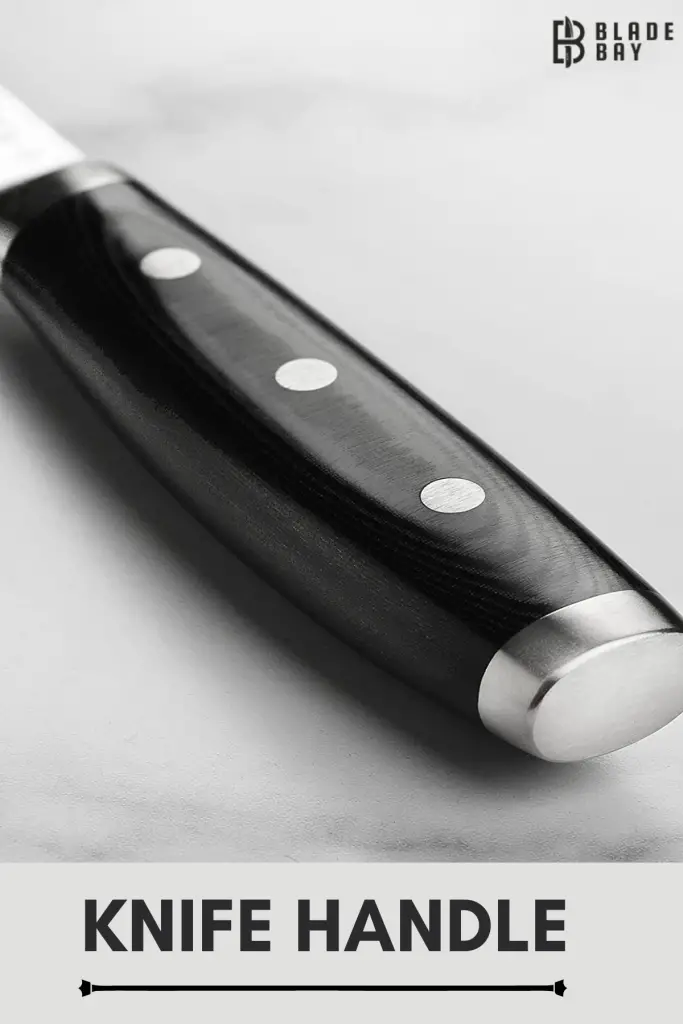
Santoku knives often have a Western-style handle made from materials such as wood, plastic, or composite materials. The handle is usually curved and ergonomic, which provides a comfortable grip and good balance.
Which Bunka Knife is the Best in the Market?
When it comes to Japanese knives, the Bunka knife is a popular choice due to its versatility and unique design. However, with so many Bunka knives on the market, it can be challenging to determine which one is the best. In this article, we will take a closer look at two popular Bunka knives and explore what sets them apart.
Shun Cutlery Premier 7-Inch Bunka Knife
The Shun Cutlery Premier 7-Inch Bunka Knife is a high-quality knife that is designed to tackle a variety of tasks in the kitchen. The blade is made from VG-MAX steel, which is a high-quality steel that is known for its durability and sharpness. The blade is also layered with Damascus cladding, which not only adds to the knife’s aesthetic appeal but also helps to reduce drag while cutting.
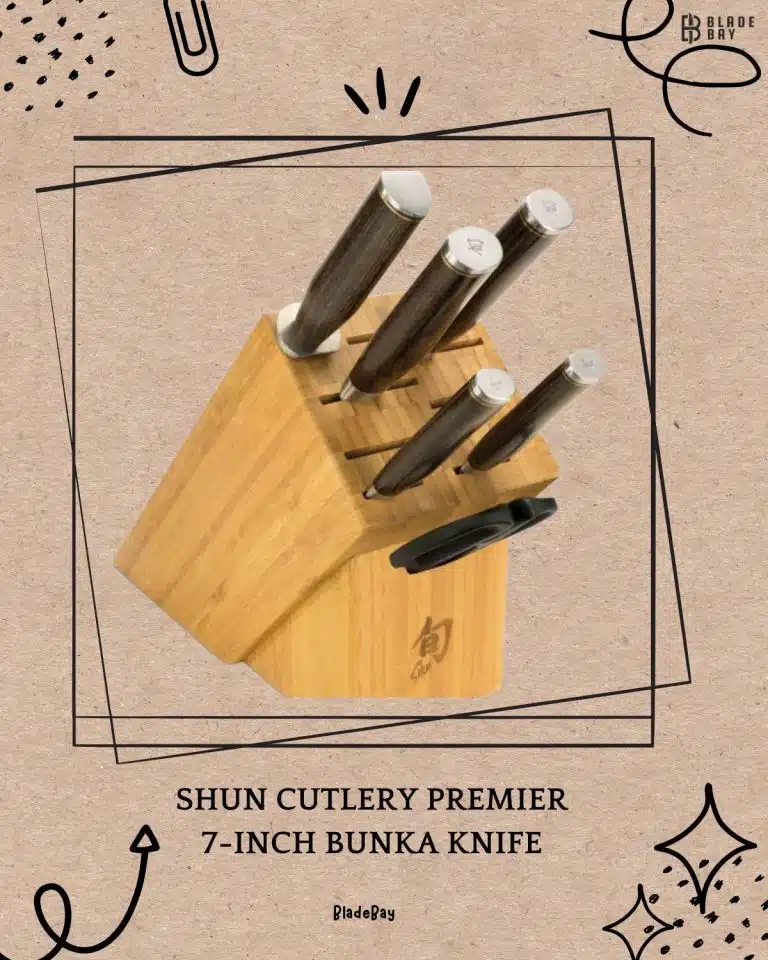
The handle of the Shun Cutlery Premier Bunka Knife is made from walnut-colored Pakkawood, which is a durable and moisture-resistant material. The handle’s ergonomic design makes it comfortable to grip, and the full tang construction adds to the knife’s overall stability and balance.
Yoshihiro Aoko Blue High Carbon Steel Bunka Knife
The Yoshihiro Aoko Blue High Carbon Steel Bunka Knife is another excellent option for those looking for a high-quality Bunka knife. The blade is made from Aoko Blue Steel, which is a high-carbon steel that is known for its sharpness and edge retention. The blade is also handcrafted in Japan using traditional techniques, which ensures that each knife is unique and of the highest quality.
The handle of the Yoshihiro Aoko Blue High Carbon Steel Bunka Knife is made from magnolia wood, which is a lightweight and moisture-resistant material. The handle is also fitted with a buffalo horn bolster, which not only adds to the knife’s aesthetic appeal but also helps to protect your fingers while cutting.
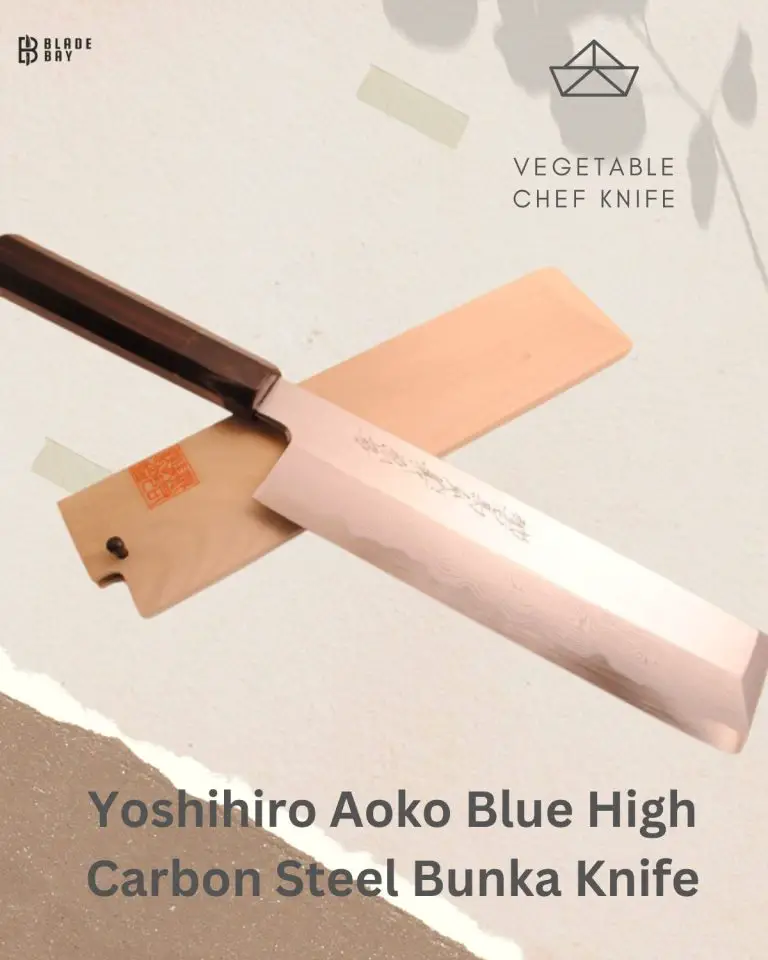
So, which Bunka knife is the best? Both the Shun Cutlery Premier Bunka Knife and the Yoshihiro Aoko Blue High Carbon Steel Bunka Knife are excellent options that are made from high-quality materials and designed to tackle a variety of kitchen tasks. Ultimately, the choice between these two knives will come down to personal preference and budget. Regardless of which knife you choose, investing in a high-quality Bunka knife will make a noticeable difference in your cooking experience.
Final Verdict – Which One You Should Choose?
Choosing the right Japanese knife can be a challenging task, especially when you’re torn between two popular options like Bunka vs Santoku. Both knives have their unique features and are excellent options for any kitchen, but which one should you choose? Let’s find out.
Santoku knives are known for their versatility and are often called the “three virtues” knife, as they excel in slicing, dicing, and chopping. With a shorter, wider blade than most knives, the Santoku provides a comfortable grip and is perfect for preparing various ingredients, including meats, vegetables, and fruits. Its versatility makes it an excellent choice for home cooks and professional chefs alike, who need a knife that can handle different tasks.
On the other hand, Bunka knives are known for their exceptional sharpness, and their unique shape makes them ideal for intricate tasks. With a flatter blade profile and a pointed tip, the Bunka knife is perfect for filleting fish, trimming vegetables, and other delicate tasks that require precision. Its versatility and precision make it an excellent choice for chefs who require a knife that can handle different cutting tasks with ease.
When it comes down to choosing between Bunka vs Santoku, the decision depends on your specific needs. If you need a versatile knife that can handle different cutting tasks, the Santoku is an excellent choice. However, if you’re looking for a knife that can handle intricate and delicate tasks with precision, the Bunka knife is the perfect choice.
In conclusion, whether you choose the Bunka or Santoku knife, you can’t go wrong with either one. Both are excellent knives that offer different features and benefits, and the decision ultimately depends on your specific needs. Regardless of which knife you choose, investing in a high-quality Japanese knife like Santoku vs Bunka is an excellent choice that will last you for years to come.


